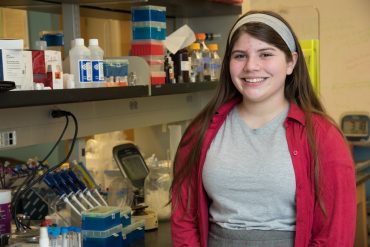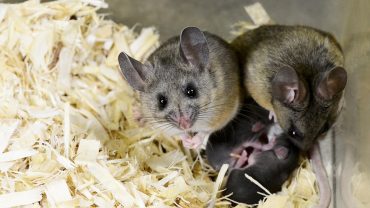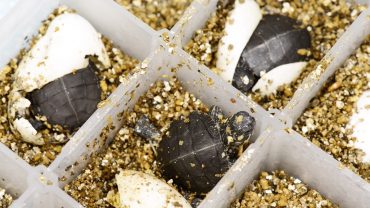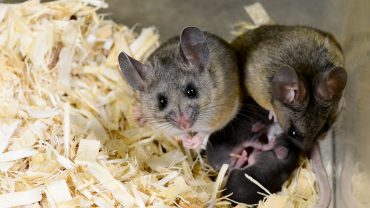BPA

April 27, 2020
Making sense of junk
Mary Butler, an undergraduate from Truman State University, gains experience working on experiments in the lab of Bond LSC’s Cheryl Rosenfeld. | photo by Roger Meissen, Bond LSC By Mariah Cox How did an undergraduate student from Truman State University spend last summer working on a research project with a Bond Life Sciences Center primary investigator and become on track to be published as first author several months thereafter? A nationwide National Science Foundation (NSF) sponsored program has allowed Mary Butler to jump-start her research career early on. Butler, a sophomore biochemistry…

Oct. 20, 2015
Maze Runners
Female rats struggle to find their way in BPA study from MU and the NCTR/FDA Cheryl Rosenfeld is one of 12 researchers partnering with the NCTR/FDA to study BPA Despite concerns about bisphenol A (BPA), academic and regulatory scientists have yet to reach a consensus on BPA’s safety. The National Institute of Environmental Health Sciences (NIEHS), the National Toxicology Program (NTP), the Food and Drug Administration and independent university researchers are working together to change that. Five years after the Consortium Linking Academic and Regulatory Insights on BPA Toxicity, or CLARITY-BPA for short, launched, results are…

June 3, 2015
Poor parenting or BPA?
Endocrine disruptors alter parent behavior in California mice California mice exposed to bisphenol A (BPA) or ethinyl estradiol changed their parenting behavior, according to an MU Bond LSC study. | Photo by Roger Meissen, Bond LSC By Roger Meissen | MU Bond Life Sciences Center What if a chemical changes the way an animal parents? That could happen due to endocrine disruptors like bisphenol A (BPA). A recent study of California mice exposed to BPA showed parents spend less time feeding, grooming and interacting with their babies, according to University of Missouri research. Even mother mice not exposed to the…

April 16, 2015
BPA overrides temperature to decide turtle sex
The environmental build-up of bisphenol A (BPA) can result in a life-changing shift for aquatic animals. For painted turtles, exposure to this chemical can disrupt sexual differentiation,, according to new research in the General and Comparative Endocrinology. Scientists at the University of Missouri have teamed up to show how low levels of certain endocrine disruptors like BPA can cause males to possess female gonadal structures in newly-hatched turtles. This collaboration between MU, Westminster College, the U.S. Geological Survey (USGS) and the Saint Louis Zoo exposed turtle eggs to levels of BPA similar to those currently found in the environment.

Feb. 12, 2013
It’s a matter of territory
Territory matters to California mice when it comes to mating. Males in this monogamous mouse species use their scent glands to mark the boundaries of their home range, making their dominance known one scent at a time to other males. Too much bisphenol A (BPA) in their environment can change that, short-circuiting their ability to complete this crucial task. Male mice fed BPA couldn’t mark territory when a normal male entered their environment, putting them at a disadvantage. That means the chemical could seriously impact whether these mice pass their genes on to the next generation. Cheryl Rosenfeld, a researcher…